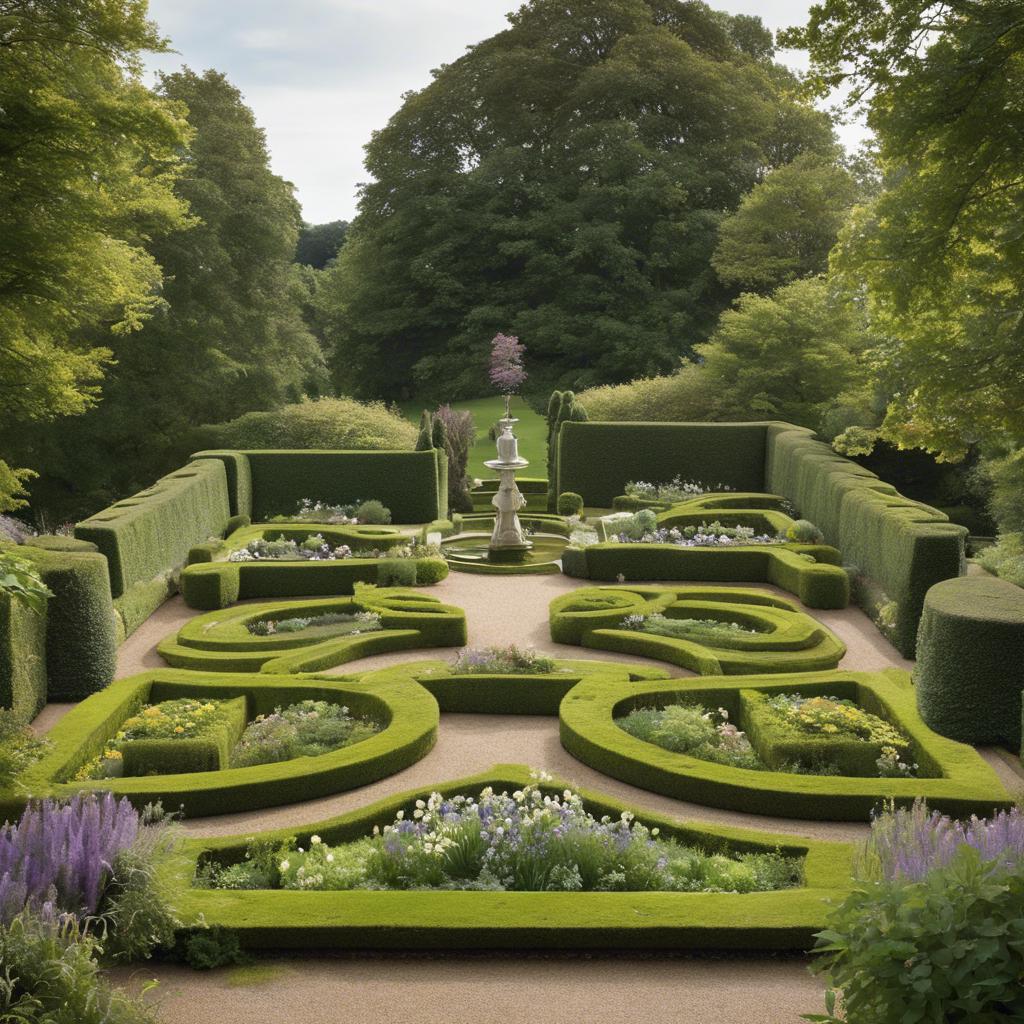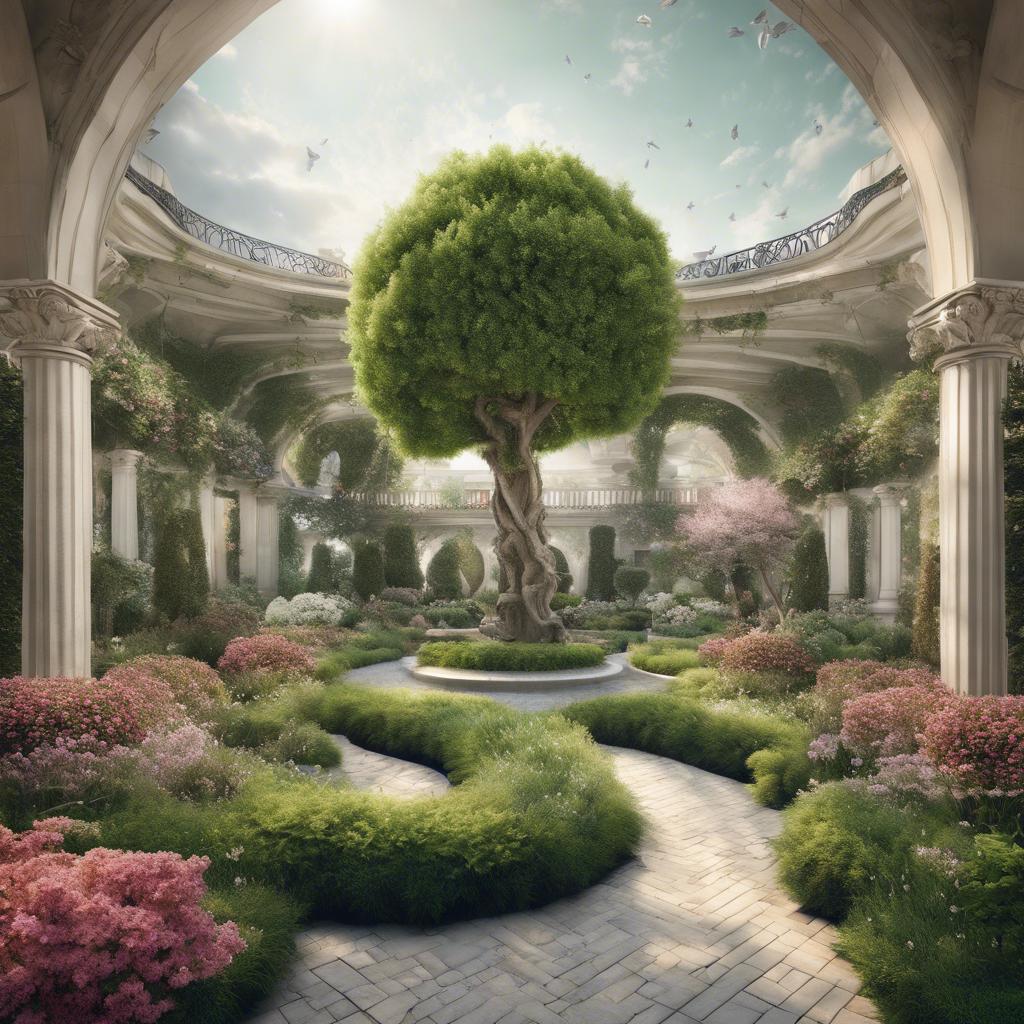During the Regency era, gardens played a significant role in English society, serving as both a reflection of social status and a sanctuary for leisure and contemplation. From grand country estates to modest townhouse courtyards, the design and cultivation of these green spaces were steeped in symbolism and precise aesthetics. In this article, we will delve into the art and science of Regency era gardens, exploring their history, features, and enduring influence on landscape design. Join us on a journey through the lush greenery of a bygone era, where nature and culture intertwined in harmonious beauty.
Step Into the World of Cheryl Bolen
Dive into the enchanting stories of love, intrigue, and elegance set in the Regency Era. Cheryl Bolen's novels offer timeless romance and captivating tales that will leave you wanting more.
Explore Cheryl Bolen's Books Now
The Elegance of Regency Era Gardens
The gardens of the Regency Era are a true reflection of the elegant and refined tastes of the time. These picturesque outdoor spaces were designed to be both beautiful and functional, serving as a peaceful retreat for the elite members of society. One of the key characteristics of Regency Era gardens is their formal layout, with geometric patterns and symmetrical arrangements creating a sense of order and harmony.
In addition to their layout, Regency Era gardens were also known for their sophisticated planting schemes. Lush lawns, vibrant flower beds, and carefully pruned shrubs were common features, creating a striking contrast against the manicured hedges and gravel pathways. Popular plants of the time included roses, lavender, and boxwood, which added both color and fragrance to the garden.
Water features were another hallmark of Regency Era gardens, with ornate fountains, reflecting pools, and meandering streams adding a touch of serenity to the outdoor spaces. These water features not only served as decorative elements but also provided a sense of coolness and tranquility during the warm summer months. Regency Era gardens were a true testament to the sophistication and artistry of the time, showcasing the perfect balance between nature and design.
Landscape Design and Architectural Features
During the Regency era, gardens became an essential element of architectural design, reflecting the grandeur and elegance of the period. These gardens were meticulously planned and meticulously maintained, featuring a combination of formal and informal elements that created a sense of harmony and tranquility.
One of the defining features of Regency era gardens was the use of architectural elements such as pergolas, follies, and gazebos. These structures served both decorative and functional purposes, providing shelter from the sun and creating focal points within the garden. Pergolas, in particular, were popular for their ability to add height and dimension to the landscape, while follies added a touch of whimsy and fantasy.
In addition to architectural features, Regency era gardens were also characterized by their use of exotic plants and vibrant floral displays. Gardeners during this period were influenced by the botanical explorations of the time, importing rare and exotic plants from around the world to create stunning and unique landscapes. These gardens were not just places of beauty, but also showcases of wealth and sophistication.
| Regency Era Gardens: | Characterized by meticulous planning and maintenance |
| Architectural Elements: | Pergolas, follies, and gazebos added height and dimension |
Incorporating Classical Elements into Modern Gardens
During the Regency era, gardens were designed to be elegant and symmetrical, reflecting the classical elements of Greek and Roman architecture. One key feature of Regency gardens was the use of formal layouts and geometric shapes, such as circles, squares, and triangles. These shapes were often incorporated into the design of pathways, flower beds, and hedges, creating a sense of order and balance.
Another characteristic of Regency gardens was the use of classical motifs and decorations, such as urns, statues, and columns. These elements were typically made from stone or bronze and placed strategically throughout the garden to add a sense of grandeur and sophistication. In addition, water features like fountains and pools were common in Regency gardens, serving as focal points and adding a touch of tranquility.
When creating a modern garden inspired by the Regency era, consider incorporating classical elements like formal layouts, geometric shapes, and classical decorations. Utilize elements such as urns, statues, and water features to create a sense of elegance and grandeur. Remember to maintain symmetry and balance in your design to capture the essence of a traditional Regency garden.
Maintaining the Authenticity of Regency Era Gardens
One of the key elements in is to carefully select plants that were popular during that period. Roses, peonies, lavender, and dahlias were all commonly found in Regency gardens and can help recreate the romantic and elegant feel of the era.
Another important aspect to consider is the layout of the garden. Regency Era gardens were typically designed in a formal style, with pathways, hedges, and geometric shapes. By incorporating these elements into the design of your garden, you can create a space that is truly reminiscent of the gardens from this period.
Additionally, paying attention to details such as the use of period-appropriate garden ornaments, like urns, statues, and fountains, can further enhance the authenticity of your Regency Era garden. These decorative elements were commonly used in gardens of the time and can add a touch of elegance and sophistication to your outdoor space.
Future Outlook
the regency era gardens were a reflection of the cultural and social ideals of the time, blending formality with natural beauty in a harmonious balance. These meticulously designed spaces provided a sanctuary for contemplation and leisure, while also serving as a means of showcasing status and wealth. As we continue to admire and study these historic gardens, we gain a deeper understanding of the intricate complexities of regency era society. Their legacy lives on as a testament to the enduring influence of the past on our present-day landscapes.


